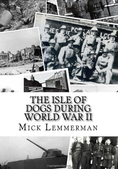Sugar, coffee and rum imports increased dramatically in the early years of the West India Docks, and rum was handled on the south side of the Import Dock, on the unsurprisingly named Rum Quay.
An important part of the handling process was the measurement of the amount and quality of rum in the casks before they were moved into the warehouse, a task known as rum-gauging. It was not as easy a task as you would expect, due to the many different shapes and sizes of casks, and the need to sample as little rum as possible. As a consequence, rum-gaugers were specialist, certified personnel.
So seriously was rum-gauging taken that it was even the subject of a government select committee in 1814, presumably because of the excise duty that was earned by the government on rum imports.
To allow rum-gauging to be performed under cover, an open-sided shed was built on Rum Quay in 1813, where caskets unloaded from ships could be gauged before being transferred to the adjacent warehouse.
In 1933, a huge fire engulfed No.2 Rum Warehouse and the nearby shed.
Survey of London:
It was attended by 60 motor pumps, three fireboats, four tugs, other appliances, … and burned for 63 hours. It was reported that ‘blazing rum ran in all directions and poured into the water hissing fiercely’.
The May 1, 1933 edition of Time Magazine said:
Concussions rocked the warehouse and burning rum ran … Blue flame fingered halfway across the Thames. London’s brass-hatted firemen came by fireboat and engine. As the rum burnt, its evaporated alcohol made the firemen tipsy.
Damage due to the fire was estimated at £ 4 million, equivalent to approximately £ 275 million in 2019.
Rum imports had been steadily declining since 1900, and the PLA decided not to rebuild the warehouse. Instead, they cleared the area in preparation for redevelopment. However, WWII interrupted those plans and – during the War – the remaining rum warehouse and shed were also destroyed. Survey of London:
[The bombing raids] resulted in a huge empty site, requisitioned in 1943 by the Ministry of Supply and the War Department, with an adjoining building (B Shed) and others at the South Dock (G. H and K Sheds and F and G Warehouses), for use by Wates Limited for the construction of concrete barges for the Normandy landings.

Two ‘Phoenix’ reinforced concrete caissons, components of a Mulberry Harbour… Two barrage balloons are visible in the clear blue sky. (Image and text: Imperial War Museum)
Due to post-War austerity, it was more than six years after the War before new building started on Rum Quay.
New warehouses – for the handling and storage of fruit and vegetables – were opened in 1954.
One of these warehouses would later be occupied by Limehouse Studios.
Survey of London:
The establishment of Limehouse Studios in the early days of the Enterprise Zone was considered an important step in the regeneration of Docklands, and indeed for a short time this was a shining example of the profitable conversion of a dockside building. However, from 1985 Limehouse Studios was overshadowed by the Canary Wharf scheme. The premises were sold to Olympia & York for £25 million in 1988, and the building was demolished in 1989.
In 2019, Rum Quay is under this little pile.
























Brilliant and informative article and I never knew that some of the Mulberry Harbours were constructed there.
Thanks, Richard
I never knew Limehouse Studios was built on such ‘rum’ history 😀
I was friends with a local band back then (Rubella Ballet who lived in Balfron Tower E14) and was invited to a TV recording of an indie rock show at Limehouse Studios in about 1984(?) Killing Joke were also there. Very happy memories.
My grandfather Alfred Jones told me about working on Rum Quay and said he had to have a nip of rum before starting so the fumes didn’t affect him